| Botanical Name |
|
| Family |
Lamiaceae - The mint and salvia family |
| Pronunciation |
plek-TRAN-thus nee-oh-KY-lus |
| Common Name(s) |
|
| Plant Group |
- Ground Cover A plant with a low-growing, spreading habit, grown specifically to cover the ground.
|
| Plant Size |
- Medium
| Tree | 10m to 16m |
| Shrub | 1m to 2m |
| Perennial/ground cover | 40cm to 60cm |
| Bulb | 40cm to 60cm |
| Succulent | 40cm to 60cm |
|
| Position |
- Canopy Shade Canopy shade is found below closely grown trees where some light filters through. Ideal for the protection of herbaceous plants.
- Deep / Full Shade Shade below spreading evergreen trees where sun's rays are unable to penetrate the canopy at any time. For light sensitive plants
- Dry Shade Shady areas where soil has poor water retention or are dependent on rain for their moisture needs.
- Light or Dappled Shade Found below trees with sparse, open foliage. Ideal for the protection of herbaceous plants.
- Partial Shade The area is in shade for part of the day and in full sun for part of the day.
- Sun The area is in full sun for all or most of the day, all year round.
|
| General Information |
- Drought Tolerance: High The plant is well adapted to arid conditions; it can survive long periods of drought and high temperatures without extra water.
- Evergreen Plants that have leaves all year round.
- Fragrant / Aromatic These plants posses a strong, usually pleasant odour.
- Frost: Half-hardy The plant is able to survive low temperatures and some frost but requires protection against severe frost.
- Prune hard after flowering Fast growing shrubs that grow lanky within a season. Cut off branches and stems of these plants to a third of their original length. This will increase the yield of flowers, improve the plants shape and enhance the structural strength of main branches.
- Salt spray tolerant A plant with specific adaptations enabling it to grow in a saline environment.
- Sand tolerant Plants adapted to survive in nutrient poor, very sandy soils.
- Water Wise Plant species originating from low rainfall regions that require less water to survive and thrive than other plant species.
- Wind Tolerant Plants able to withstand the effect of strong winds.
|
| Specific Information |
Plectranthus neochillus is a robust ground cover that needs to be monitored as it grows very fast and can become invasive. It is exceptionally useful for covering difficult spots or eye-sores, such as drains, untidy concrete edges and areas where building has recently taken place. It grows well in full sun and seldom needs watering. If grown in shade it needs to be cut back with garden shears so that it does not become too leggy.
|
| Ad Break |
|
| Flowers |
| Description |
sturdy stems of small spur flowers held above the plant
|
| Season |
- Spring to Autumn Plants will seldom bloom for the entire season as given in the list, but should flower during a period within these parameters.
|
| Colour |
|
| Growth Rate |
- Very Fast Specifying growth rate can be very misleading as there is considerable variation of growth rate depending on type and species of plant, available water, supplementary feeding, mulching and general care, as well as the plants suitability and adaptability to the garden environment.
|
| Plant Uses |
- Attracts bees, butterflies or other insects This plant attracts insects which can be food for birds or other creatures in your garden.
- Border A strip of ground, at the edge of a driveway or path in which ornamental plants or shrubs are planted.
- Edging A low growing plant that provides softness or definition to the edges of a bed or walkway.
- Filler Either a fast growing tree or shrub used temporarily to fill in an area while the permanent plants grow to a desired size, or a plant used to fill gaps in borders or beds.
- Ground Cover Low-lying plants that spread fast, require minimal maintenance, and cover large expanses or bare areas between bulbs or shrubs. They provide protection from erosion and drought and improve the visual appearance of the garden.
- Mass Planting Plants useful for filling a large area with just one or a few kinds of plants spaced close together. Creates a bold, dramatic effect and to reduces maintenance.
- Pioneer for new gardens A very fast growing plant, able to withstand hardship, that can be used to populate land that has recently been cleared of natural vegetation. These plants pave the way for slower-growing species by adding nutrients to the soil and creating leaf litter.
- Retaining Walls Shallow rooted plants for cascading over dry stone walls or planting in hollow spots in retaining blocks.
- Stabilize Banks Plant is used to prevent soil erosion because their roots will form a mat that stabilizes the soil and keeps it from washing away in heavy rains.
- Suitable for coastal gardens Plants adapted to dry, sandy soil, forceful wind, limited rainfall and intense sunlight.
- Suitable for seaside gardens Plants that will survive the hostile environment of harsh salty winds, dry sandy soil, irregular rainfall and heat found in seaside gardens.
|
| Distribution and Habitat |
from the Eastern Cape to KwaZulu-Natal, Mpumalanga, Limpopo, and North West, as well as Zimbabwe, Zambia and Namibia, in dry thicket and open and sometimes rocky woodland
|
| Planting Suggestions |
Plectranthus neochilus will grow and flower with the most meager feeding. Frequent light pruning is necessary to keep it compact and bushy. Prune back hard after flowering during midwinter.
|
| Medicinal Uses |
This plant is believed to deter snakes, possibly due to the odour of the leaves.
|
| Ad Break |
|


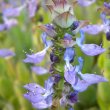
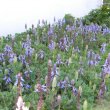
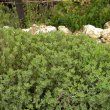
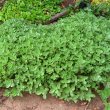
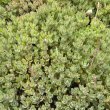
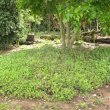



Comments
plectranthus neochilus
It is said that this plant cleans the air is this true or false
Plectranthus neochilus
Hi Annetie
I have not come across this information from any of my sources so I can't give you an answer. I have read that the strongly smelling variety of this plant can be planted around the house to deter snakes. The most useful plant in South Africa for absorbing carbon from the air is the Spekboom (Portulacaria afra).
Plectranthus neochilus
Would this plant also keep cats out of the garden? If not plse suggest a suitable plant.
Rgds
Dalene
Plants to deter cats from the garden
Hi Dalene
Keeping cats out of the garden is a problem all over the world and there seem to be as many remedies as there are cats. It would also appear that very few of them actually work. I did some searching and the general census is that plants with strong odours may keep some cats away from the area. These plants can be planted around the beds as well as among other plants in the garden beds, or, to discourage cats from entering the yard, they would be planted all round the perimeter. Here is a list of some plants you could try:
plectranthus neochillus, tulbagia (wild garlic), lavender, strongly scented pelargonium species, lemon thyme, citronella, rosemary, garlic chives, penny royal, Coleus canina, rue (toxic to humans) and marigold
For many more possible solutions to your problem, do a Google search with the words 'plants deter cats garden' You will find a few hundred websites dealing with this subject.
Hope this helps. If you have any success, let us know - I'm sure there are many people out there looking for a solution that works.
Kind regards
Lorraine
Hi Loraine.
Hi Loraine.
I went to Stodels in Kenilworth to buy an Indian Basil (Tulsi) plant as I had read somewhere that they keep flies away. They didn't have so the assistant recommended P.Neochilus.At this stage I was ready to try anything as pesticide sprays were affecting my asthma. I have planted them in hanging pots near my kitchen window and door. Remarkably I have had only a few flies since I planted them. I would recommend P. Neochilus to anyone who is fed up with flies. As for the hanging pots, it is still early days. I hope they survive in the pots. But definitely working as a fly deterrent. I am now going to hang some in my car port to see if it will keep cats off my car. Will let you know. Thank you for you post.
Kind Regards
Fatima
Plectranthus neochilus for flies
Hi Fatima
Thanks for your interesting and useful comments.
These plants will grow very well in pots but it will be a good idea to trim them back quite often so the stems do not get too long. Also let the soil dry out between waterings.
Do please let me know if your experiment with keeping cats away is successful or not. This is such a problem for a lot of people.
Kind regards
Lorraine
Discuss this plant
Share knowledge, ask a question or give an experience.